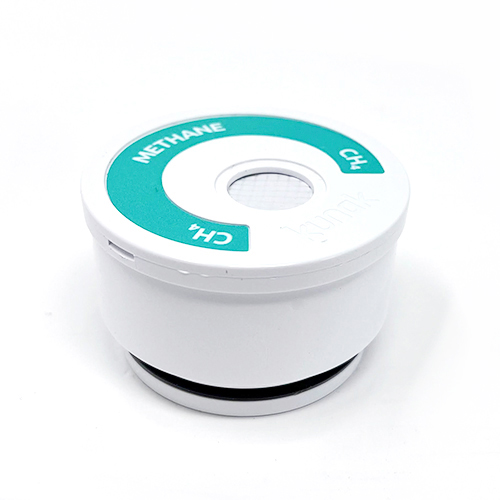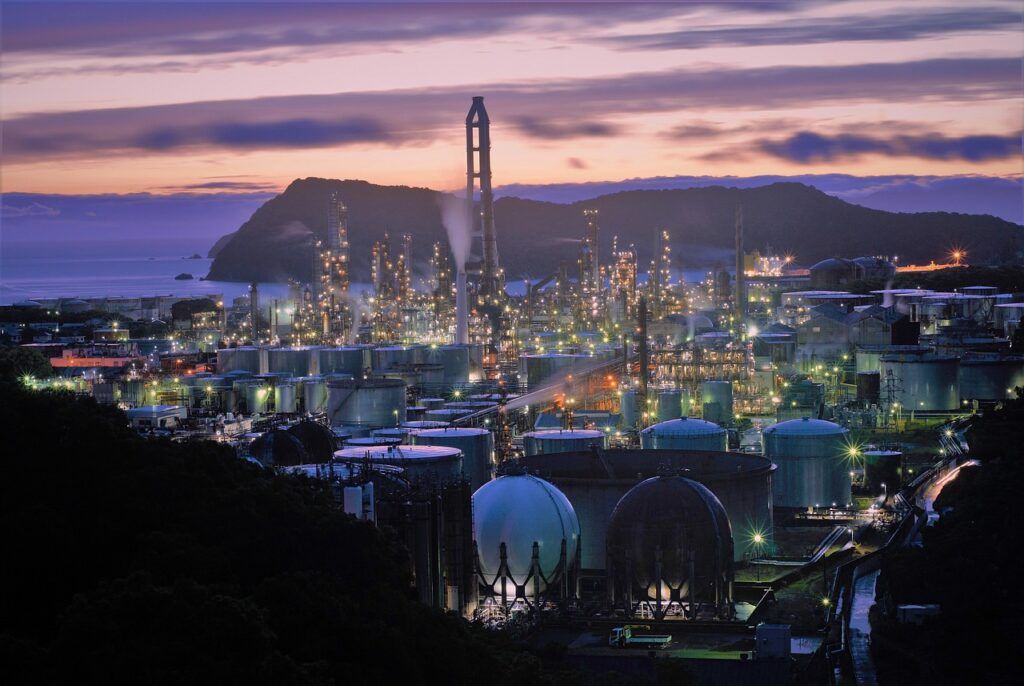Methane
Reliable real-time
data on CH4
GasPlug TECHNOLOGY | PATENTED DESIGN

Where is it found?
Methane (CH4) is the most abundant organic molecule in the atmosphere, being one of the most important greenhouse gases. It is colourless, odourless and insoluble in water. The main anthropogenic emission sources are due to the production and transport of coal, natural gas, and oil.
CH4 emissions also result from livestock and other agricultural practices, land use and solid waste landfills. Other natural sources include reduced, anoxic portions of wetlands and portions of ecosystems undergoing organic decomposition.
Why is it harmful?
High levels of CH4 can result in vision problems, memory loss, nausea, vomiting, and headache. In severe cases, there may be changes in breathing and heart rate, balance problems, numbness, and unconsciousness. Long-term or large quantity exposures to it may cause death. CH4 contributes to the formation of tropospheric ozone and particulate pollution.
Moreover, methane is a much more potent greenhouse gas than CO2 contributing significantly to global warming and climate change.
CH4 cartridge
Various options are available for methane monitoring, each designed for different applications and measurement ranges:
- Cartridge (Type C): a state-of-the-art sensor designed for applications requiring high-sensitivity CH4 monitoring. This sensor provides accurate measurements from low concentrations (2 ppm) to 300 ppm. Its compact design, cost-effectiveness and cutting-edge performance make it an ideal solution for continuous monitoring and leak detection. This sensor is sensitive to H2S concentrations (> 100 ppb); therefore, it is recommended to install the H2S cartridge in the same device in order to correct for this interference and ensure accurate CH4 measurements.
- Methane Laser Module (Type D): leveraging Tunable Diode Laser Absorption Spectroscopy (TDLAS) technology, this module (320 x 150 x 120 mm) provides exceptional accuracy for methane measurements, with a range spanning from sub-ppm levels to 1,000 ppm. Its unique selectivity for methane, free from interference by other gases, water vapor, or dust particles, makes it an advanced solution for industries demanding the highest accuracy.
Technical specifications
TDLAS (D)
0 – 1.000 ppm (D)
0.1 ppm(D)
0 a 98 %RH(D)
> 5 years (10 years from manufacturer) (D)
< 0.30 ppm(D)
< 30 sec(D)
±0.5 ppm + 1% of reading (D)
> 0.90 (D)
- Measurement range: concentration range measured by the sensor.
- Resolution: smallest unit of measurement that can be indicated by the sensor.
- Operating temperature range: temperature interval at which the sensor is rated to operate safely and provide measurements. (**) In PM sensor Type A: -40 to 50ºC with heater (more information on this version on request).
- Operating RH range: humidity interval at which the sensor is rated to operate safely and provide measurements.
- Recommended RH range: Recommended relative humidity range for optimal sensor performance. Continuous exposure outside the recommended range may damage the cartridge.
- Operating life: time period during which the sensor can operate effectively and accurately under normal conditions.
- Guarantee range: concentration range covered by Kunak's guarantee.
- LOD (Limit Of Detection): measured at laboratory conditions at 20ºC and 50% RH. The limit of detection is the minimum concentration that can be detected as significantly different at zero gas concentration, calculated according to the Technical Specification CEN/TS 17660.
- Repeatability: measured at laboratory conditions at 20ºC and 50% RH. Closeness of the agreement between the results of successive measurements of the same measure carried out under the same conditions of measurement, calculated according to the Technical Specification CEN/TS 17660.
- Response time: time needed by the sensor to reach 90% of the final stable value.
- Typical precision - R2: statistics obtained between the device hourly measurements and reference instruments in field test between -10 to +30ºC at different locations. (*) For the type B PM sensor, the expected error for PM10 is higher in presence of coarse particles.
- Typical accuracy: for criteria pollutants is the average Mean Absolute Error (MAE) obtained between the device hourly measurements and reference instruments for 1 to 8 months field test between -10 to +30ºC in different countries. For other pollutants is the expected error of the measurement at the reading.
- DQO-Typical U(exp): Data Quality Objetive expresed as the Expanded Uncertainity in the Limit Value obtained between the device hourly measurements and reference instruments for 1 to 8 months field test between -10 to +30ºC in different countries, calculated according to the European Air Quality Directive 2024/2881 and from the Technical Specification CEN/TS 17660. (*) For the type B PM sensor, the expected error for PM10 is higher in presence of coarse particles.
- Typical intra-model variability: calculated as the standard deviation of the three sensor means in 1 to 8 months field test between -10 to +30ºC in different countries.
A, B, C, D superindex: the super indexes refer to different types of cartridges related to the same target pollutant but with different technical specifications.


